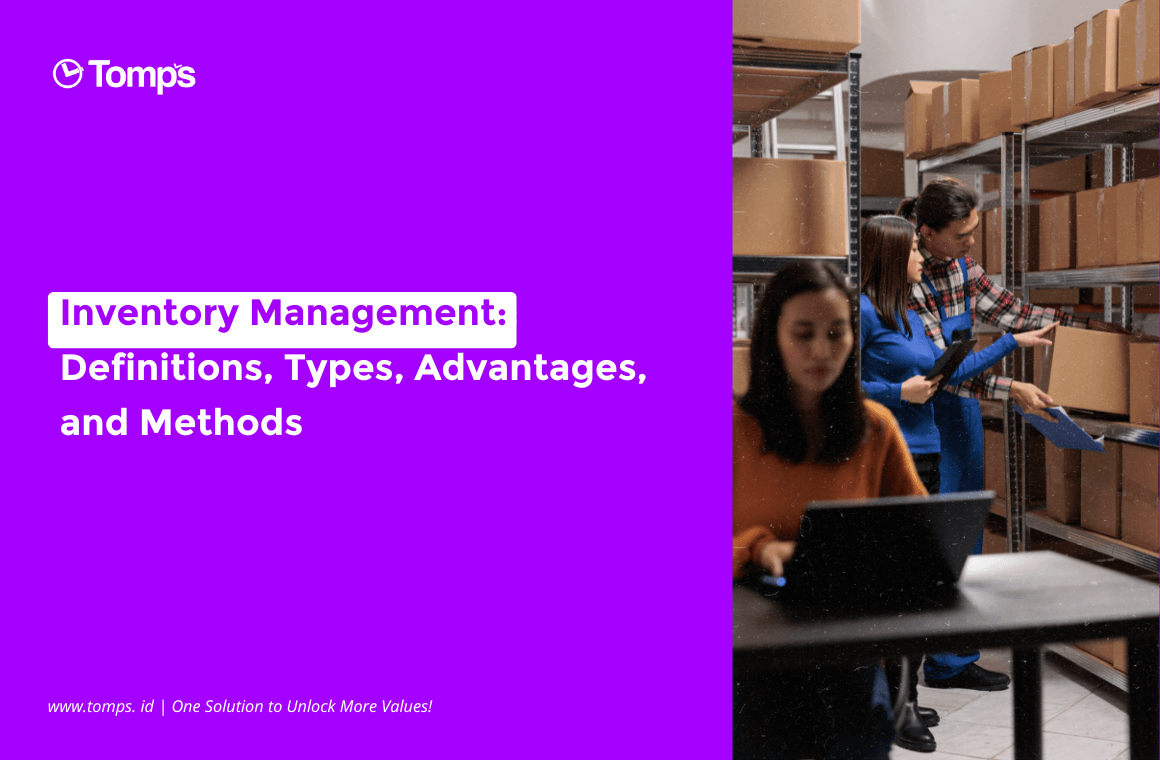Introduction
Asset management is a critical process in the modern business world. Assets are valuable resources for an enterprise and can include various elements, such as property, equipment, intellectual property, finances, and people. In this article, we will explore the concepts, strategies, and importance of asset management in achieving business efficiency, success, and sustainability.
Asset management plays a very important role for companies or organizations in order to achieve certain goals. The responsibility of asset management is to ensure that the assets owned by the company are well maintained and optimally utilized. This is related to the maintenance and use of assets to avoid loss or damage that can harm the company. On the other hand, asset management also aims to ensure that companies or organizations make the most of their assets to gain profits and increase efficiency.
Definition of Asset Management
Asset management is the process of planning, organizing, coordinating, controlling, and monitoring all assets owned by a company to achieve set business objectives. This process involves managing assets from purchase to maintenance and disposal, with the main objective of increasing the value of assets and having a positive impact on organizational performance.
According to the book "Asset Management 110 Success Secrets" written by Martin Huff, an entrepreneur who has long experience in the field of asset management, Asset Management Management is a process of collecting, organizing, monitoring, analyzing, and reporting assets. The main objective of asset management management is to ensure that the assets owned by the company are well maintained and optimally used so as not to cause losses to the company.
In addition, in the book "Asset Management: Tools And Issues" by Frank J Fabozzi et al, asset management is defined as a process that involves managing a portfolio of assets on behalf of investors with the aim of obtaining optimal returns. In asset management, investors entrust their asset portfolio to asset managers who will invest the funds in various types of assets such as stocks, bonds, real estate, and others.
Stages of Asset Management:
Based on the book "Asset Management 110 Success Secrets", Martin Huff also presents five stages of asset management, which are as follows:
(1) Preparation of an asset list: The initial stage of asset management is to compile a list of company assets that includes the type, amount, and value of these assets.
(2) Identification of risks and vulnerabilities in assets: Each company's assets have different risks and vulnerabilities. Therefore, the second stage of asset management is to identify the risks and vulnerabilities of each asset owned by the company.
(3) Asset management strategy: The third stage is to determine the asset management strategy that should be geared towards optimizing the use of assets by reducing the associated risks and vulnerabilities.
(4) Asset management strategy implementation: The fourth stage is the implementation of the determined asset management strategy.
(5) Monitoring and evaluation: The final stage is the monitoring and evaluation of the asset management process. This is done to ensure that asset management is running well and monitor potential risks that may occur.
Key Components of Asset Management
According to the copperleaf.com website, various models have been developed for asset management systems, and most adopt the general principles described in ISO 55001. One of the most recognized models comes from the Institute of Asset Management (IAM). The model outlines the key components of an asset management system which includes six key points:
Strategy and Plan: This component sets the context in which the organization operates and defines an asset management strategy that aligns with the overall corporate strategy. In addition, it identifies the various roles involved in asset management and formulates long-term plans such as the Strategic Plan for Asset Management (RSMA). This section provides helpful direction in planning assets in more detail for the future.
Asset Management Decision Making: This section establishes the framework and policies for decision-making to ensure optimal decisions are taken at various levels and times in the organization. This framework assists in developing a more tactical Asset Management Plan and setting annual budgets.
Life Cycle Delivery: This section involves a number of practical day-to-day aspects of managing assets throughout their lifecycle, including resource management and reliability engineering. Attention is given to the maintenance, operation and disposal of assets, starting from the design and build phase through to ongoing refurbishment.
Asset Information: This section highlights the importance of collecting relevant data to be converted into information, which will eventually become knowledge that supports decisions and actions. In addition, this section emphasizes the need for appropriate information technology systems to manage asset information. The ultimate goal is to have a "single source of truth" for any asset-related data.
Organization and People: Asset management often brings a paradigm shift and requires adaptation in corporate culture and strong leadership. Adjustments in the way of thinking and skill sets within the organization are required. In particular, every member of the organization is expected to contribute to achieving uniform asset management goals, creating alignment or "line of sight," so that everyone understands how asset management goals and strategies relate to their own role and contribution within the company.
Risk and Review: One of the key challenges for organizations is to identify, understand, and tolerate risks. Organizations must identify relevant risks, such as safety, environmental, and reputational risks, and determine their tolerance levels. This approach requires consultation with stakeholders and encourages rational, fact-based decision-making. In addition, organizations are also required to develop contingency plans to deal with specific risks and periodically monitor existing risks.
Asset Management Strategies
Asset management management strategies according to a journal article published by the Multidisciplinary Digital Publishing Institute (MDPI) are plans and approaches used to manage the assets of an organization with the aim of improving asset performance and value in the long term. This strategy involves making decisions about resource allocation, long-term planning, maintenance, replacement and optimization of assets. The goal is to achieve competitive advantage, operational efficiency, and fulfillment of stakeholder expectations. Based on this description, if further elaborated, the asset management management strategy can be carried out in 5 ways:
Risk Analysis: Conducting a risk analysis helps companies identify and manage potential risks that can affect asset performance. By understanding the risks that may occur, the company can take appropriate preventive measures or emergency plans.
Technology Updates: Continuously applying the latest technology in asset management can improve efficiency and effectiveness. The use of technology such as asset management software can help in better monitoring and maintenance of assets.
Focus on Sustainability: Sustainable asset management involves implementing environmentally friendly business practices. Companies can integrate environmental and social considerations in their asset lifecycle.
Regular Maintenance Scheduling: Regular maintenance scheduling can help avoid deep damage to assets and reduce unexpected repair costs.
Data Management: Accurate and structured data about assets is key in making the right decisions. Using a reliable data management system helps companies manage assets efficiently.
The Importance of Asset Management
In the book "Asset Management: Tools And Issues" written by Frank J. Fabozzi et al, asset management is considered very important in the context of finance and investment. Some of the reasons why asset management is considered important based on the contents of the book are as follows:
Optimization of Portfolio Management: Asset management helps in the optimization of investment portfolio management. Through a careful approach in asset selection and allocation, investors can achieve the desired level of risk and return according to their financial goals.
Diversification: In the book, emphasis is given on the importance of diversification in an investment portfolio. Good asset management encourages investors to allocate their funds across different asset classes to reduce risk and increase profit opportunities.
Risk Management: Asset management helps in identifying and managing risks associated with investments. In this book, the author discusses various risk management techniques, including using derivative instruments, insurance, and other strategies to hedge against market fluctuations.
Understanding Market Cycles: This book discusses how asset management helps investors to understand market cycles and identify opportunities and risks associated with changing economic conditions.
Proper Asset Selection: Through fundamental and technical analysis, asset management helps investors in selecting the right assets to invest in. This involves fundamental assessment of the company, macroeconomic analysis, and evaluation of past performance.
Long-term Investment Management: This book emphasizes the importance of asset management in viewing investments as a long-term endeavor. With a sustainable approach, investors can achieve portfolio value growth and overcome market volatility.
Institutional Asset Management: The book also discusses institutional asset management, where the author outlines the challenges and strategies in managing large funds such as pension funds and other institutional investment funds.
Manage Your Business Asset with Tomps Asset

Asset management plays a crucial role in achieving business efficiency, success, and sustainability. In this case, Tomps Asset as a software as a service (SaaS) provides a relevant and useful solution for companies in managing their asset management.
Tomps Asset assists companies in compiling detailed asset lists, identifying risks and vulnerabilities, and determining optimal asset management strategies to mitigate risks and vulnerabilities. Tomps Asset also assists in monitoring and evaluating the asset management process, so that companies can ensure that their assets are well maintained and optimally utilized.
Thus, Tomps Asset is a relevant and effective solution in helping companies achieve business value and sustainability through efficient and optimized asset management. Learn more about Tomps Asset through the tomps.id website, what are you waiting for, try Tomps Asset now!









